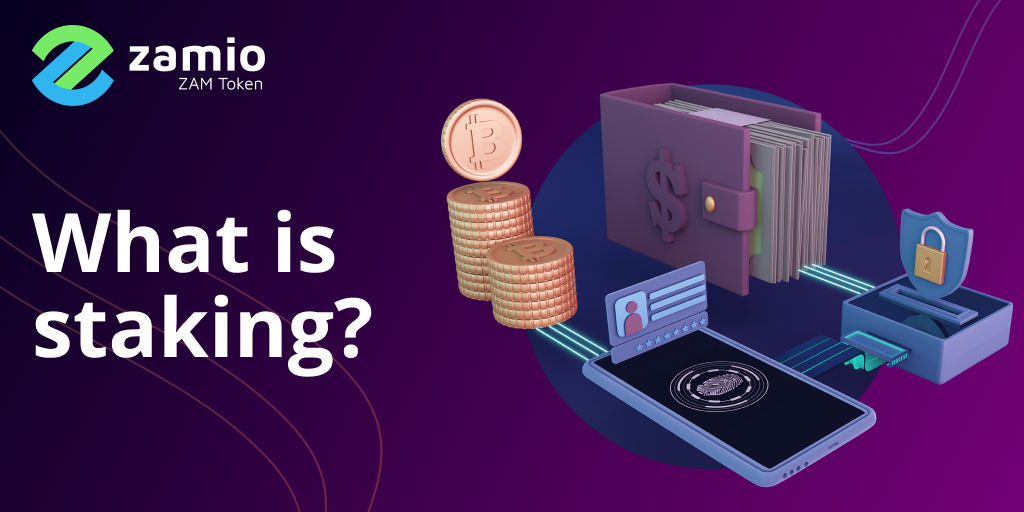Staking cryptocurrencies is technically is similar to a bank certificate of deposit. The principle is the same: the client deposits money into a bank account and cannot withdraw it until the term of the deposit expires. The bank uses the money as it sees fit and pays interest to the client. In the crypto market, coin or token owners can stake (deposit) their funds with different crypto projects or service providers. Stakers must agree to the terms and conditions such as penalties, minimum staked amount, maturity, and interest or reward distribution.
There are different motives for crypto projects to accept crypto deposits and reward owners. The three common and independent motives for offering users to stake their crypto are:
- Maintaining the security and integrity of the network.
- Providing liquidity to facilitate operation.
- Preserving the value or price of a token or coin.
Table of Contents
Staking to maintain the integrity of the network
Some cryptocurrencies projects build their project from the ground up. They operate on their own blockchain to store data, and they also have their own network to receive and processes transactions. The network is made of nodes or devices that connect to each other directly without a central server in between. The nodes, run by individuals from all over the world known as validators or miners, take on the responsibility of validating transactions broadcasted on the network. They make sure that every transaction is genuine and legitimate before it is stored permanently in the blockchain.
For doing this work, validators or miners receive transaction fees and rewards in the form of coins native to the network they support. However, before a node collects the reward, all the nodes must agree on the current status of the blockchain. If they reach a majority consensus, then the reward is granted. There are two common consensus mechanisms to reach an agreement: proof of stake and proof of work. In proof of stake, the focus of this article, nodes must stake or deposit a certain amount of coins as network security collateral, and only one node is randomly selected to add the next block of transactions.
Nodes that try to cheat the system or corrupt its data will have their deposit taken away. For example, In the Ethereum upcoming proof of stake model, validators will be required to stake 32 ETH or 120000 dollars in today’s value. It does not make sense for validators to cheat as the risk outweighs the reward of cheating. Cardano, for example, is a crypto project that uses ADA as its native cryptocurrency. Validators on the Cardano network receive ADA rewards for every block of transaction they successfully process.
Crypto projects that use proof of work consensus mechanisms such as bitcoin are not required to stake. In this model, every node validates the transaction, and the first to do so correctly gets to form the next block of transactions and ultimately receives the reward after consensus is reached. Validators in this model are called miners.
How to participate in proof of stake cryptocurrencies
Anyone equipped with the technical knowledge and special hardware devices can run a node and become part of the network to earn staking rewards. However, beginners and average users can still participate and earn staking rewards indirectly by depositing their crypto in staking pools that run nodes on behalf of depositors or connect them to nodes in need of capital.
Many crypto wallets such as Trust and centralized crypto exchanges such as Binance and Kucoin offer this service for their registered users for a fee. The crypto owner here uses staking as a service by delegating their tokens or coins to nodes through an intermediary. You can stake Ethereum (ETH), Cardona (ADA), Solona (SOL), or any cryptocurrency as long it uses a proof of stake consensus mechanism.
Staking your crypto with service providers is as simple as visiting the staking section, choosing the available crypto to stake and adding the staking amount then agreeing to the terms and conditions, and finally clicking participate.
Staking to provide liquidity and support operations
Crypto owners can stake their crypto without a proof of stake model in crypto projects that run decentralized applications (Dapps). Dapps run without a centralized authority or an intermediary, and they range in scope from gambling to finance. Applications for decentralized finance (DeFi) have to rely on liquidity from crypto holders to support the business model. They incentivize crypto holders to stake or deposit their holdings in a staking pool to earn rewards for facilitating the platform operations.
This process of staking in DeFi is known as liquidity mining or liquidity staking. Users can stake their crypto in projects such as decentralized crypto exchanges such as Uniswap. In this instance, crypto owners provide liquidity to facilitate trading between two tokens. They can also deposit their money in decentralized borrowing and lending protocols such as Compound to facilitate loans for those who want to borrow, all in exchange for interest and token rewards from the platform. For more information read, what is yield farming.
How to participate in DeFi staking
First, you need to choose the DeFi project that you want to support. Let’s say you choose Pancake which is a decentralized crypto exchange. You then visit their website and go to the earn section here. Click on farms and choose the trading pair you want to provide liquidity for. Now you must connect a crypto wallet accepted by the platform such MetaMask or Trust. You can explore crypto wallet types in this article here.
You can view the trading pair information and learn about the rewards before staking your crypto. With Pancake, you can earn 0.17% on every trading transaction that occurs. The trading fee is distributed proportionally to your contribution to the total pool. You also earn Pankcake tokens as an extra incentive, the cherry on top.
Preserving the value or price of a token or coin
New crypto projects may launch a staking reward program to incentive the holders of their tokens not to sell. The price of a token is likely to stabilize and appreciate over time when there is no sell pressure occurring. You can think of staking, in this instance, as a loyalty program. Holders earn more tokens for holding their coins or tokens. Each project offers staking rewards on their platform or someone else’s where holders lock their tokens to earn more tokens.
Summary
All of the above staking methods are passive income streams where crypto owners deposit their crypto to earn steam of monthly income. With rewards, however, comes risk. The risk depends on the method used. A common risk in all three is the price depreciation of the crypto asset while being locked. Users should also consider other risks such as technical and legal risks among others before buying and committing their hard-earned cryptocurrencies to a specific crypto project.








